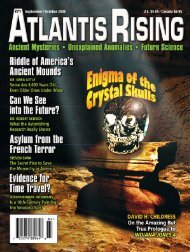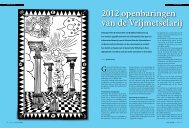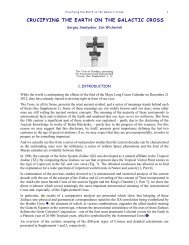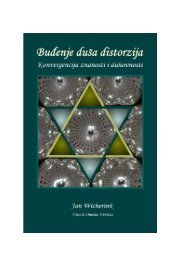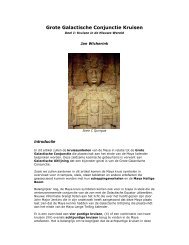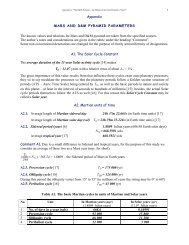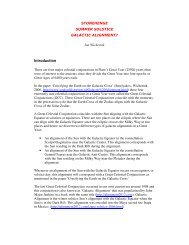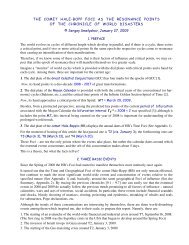Great Celestial Conjunction Crosses - Souls of Distortion
Great Celestial Conjunction Crosses - Souls of Distortion
Great Celestial Conjunction Crosses - Souls of Distortion
Create successful ePaper yourself
Turn your PDF publications into a flip-book with our unique Google optimized e-Paper software.
At the Vatican this understanding <strong>of</strong> the two crosses is displayed in a compelling<br />
way. At Saint Peter’s Square we find the obelisk at the centre <strong>of</strong> the square.<br />
Around the obelisk we find two circles. The inner circle contains a 4 pointed<br />
cross. The outer circle contains an 8 pointed cross. The obelisk at the centre <strong>of</strong><br />
Saint Peter’s Square represents the Sun. The rotating Earth Cross (inner circle) is<br />
displayed here against the backdrop <strong>of</strong> the 8 pointed cross. The outer circle<br />
therefore represents the superimposed crosses <strong>of</strong> the Earth Cross and<br />
Galactic Cross.<br />
The lines <strong>of</strong> the crosses are set in travertine among the cobblestones <strong>of</strong> the Plaza.<br />
In 1817 circular stones were set to mark the tip <strong>of</strong> the obelisks shadow at noon<br />
making the obelisk a giant sundial gnomon with Saint Peter’s square perfectly<br />
aligned to the cardinal directions!<br />
Above: the perfect alignment <strong>of</strong> the St. Peter's square to the cardinal directions.<br />
Below: The 8 pointed cross on St. Peter's square, the obelisk is a pagan token <strong>of</strong><br />
Sun worship. There is a 4 pointed cross in the inner circle and an 8 pointed<br />
cross in the outer circle, the obelisk represents the Sun!<br />
When the Pope gives his blessings to the public at St Peter’s square during the<br />
morning service at Easter, he’s facing directly into the equinox Sun which rises<br />
due East! The celebration <strong>of</strong> Easter is associated with the vernal equinox and has<br />
pagan roots. Its roots can be traced back to ancient Babylonian myths concerning<br />
the goddess Ishtar (pronounced as Easter) as we have demonstrated in this<br />
article. Ishtar is linked to the Babylonian understanding <strong>of</strong> the precession <strong>of</strong> the<br />
equinoxes and its association with the 8 pointed cross (Shamash).



